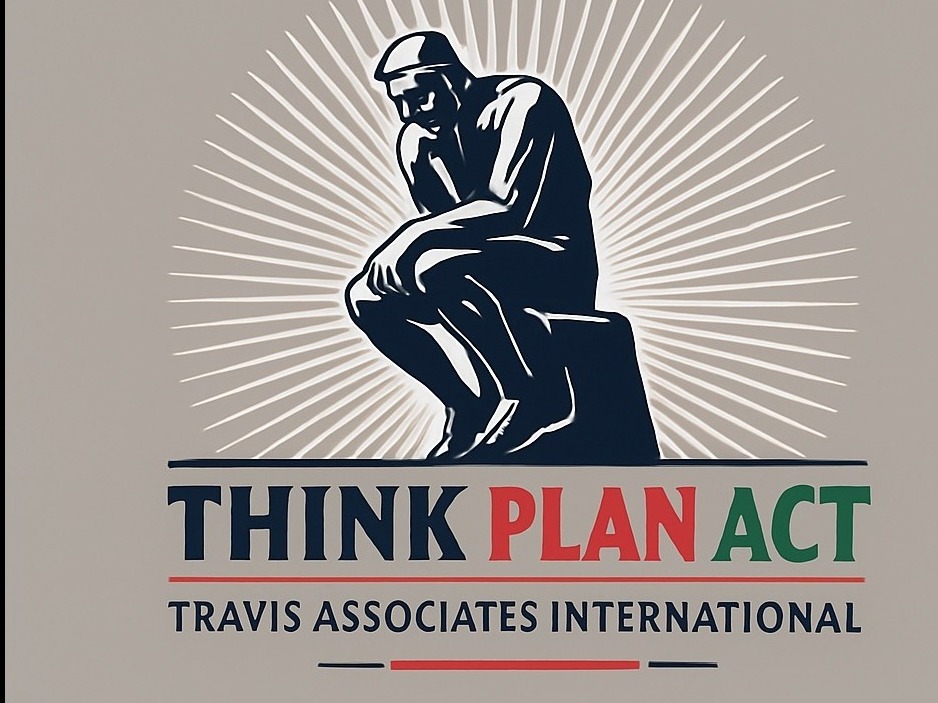Startling Statistic: The average person is exposed to over 4,000 media ads each day —but how many do you actually remember? Social media advertising cuts through this noise with the right strategy, but getting it wrong can waste both time and money. Ready to supercharge your media ad campaigns, avoid common pitfalls, and unlock the full potential of social media? Let’s dive in!
Did You Know? The Surprising Reach and Risks of Social Media Advertising
- Startling Statistic: The average person is exposed to over 4,000 media ads each day—how many do you remember?

In today’s digital age, social media advertising has become omnipresent—every scroll, click, and swipe could mean encountering another targeted ad. The reach of media ads is unprecedented, offering brands unmatched opportunities to put their messaging in front of vast, diverse audiences. However, alongside these broad prospects come substantial risks: wasted ad spend, Ad fatigue, and missed connections with your target audience .
Navigating the crowded world of media advertising demands more than a budget and creative idea. Without an effective strategy, your social media ads might land in front of the wrong eyes, burn through budgets, or even harm your brand awareness if they’re misaligned with platform-specific best practices. Understanding the delicate balance between visibility and relevance is crucial for every successful advertising campaign—so let’s break down exactly where brands most often stumble, and how you can steer clear.
Common Social Media Advertising Pitfalls: What They Are and How to Avoid Them
- Poor targeting of the target audience
- Neglecting the right media platforms for your media ad campaigns
- Misaligned ad formats for the platform and audience
- Overlooking advertising cost efficiency and budget leaks
- Ignoring media ad creative best practices
Target Audience Mistakes in Social Media Advertising

One of the most common mistakes in social media advertising is misunderstanding or broadly defining your target audience . Many campaigns target everyone broadly, hoping to maximize exposure—but this often leads to low engagement and wasted ad spend. Platforms like Facebook, Instagram, TikTok, and LinkedIn offer advanced targeting options, including demographics, interests, and lookalike audiences, making it essential to zero in on your most valuable prospects.
Audience segmentation is the backbone of any effective media ad campaign. Without granular targeting, your campaigns may fail to resonate or could even irritate potential customers, damaging your brand awareness. Start by creating detailed buyer personas. Analyze previous campaign data, conduct audience research, and leverage insights from each social media platform to ensure that every advertising campaign reaches those most likely to convert. Remember, quality beats quantity every time when it comes to building lasting connections in the world of social media marketing .
Selecting the Wrong Media Platforms for Social Media Advertising
Brands often make the mistake of spreading their media ads across every available social media platform . While cross-platform presence can be powerful, not every platform is right for every business. For example, a B2B SaaS company may find more professional leads on LinkedIn than on TikTok, while a trendy e-commerce brand might flourish on Instagram or TikTok with dynamic video ads.
To maximize media advertising ROI, prioritize the platforms where your target audience is most active and engaged. Assess each social media platform’s user demographics, ad formats, and engagement patterns. Streamlining your efforts on key platforms also allows you to tailor creative assets and messaging for context and maximize cost efficiency. Always align your platform choices with your overall brand strategy and KPIs for a focused, high-impact presence.
Incorrect Use of Social Media Ad Types and Ad Formats

Choosing the wrong ad types or ad formats for your campaign and platform is a surefire way to undermine your social media ad strategy. A video ad might soar on TikTok or Instagram Stories, while static images or carousel formats can perform best on Facebook or LinkedIn. Misalignment leads to indifferent audiences, poor engagement, and a waste of your media ad budget.
Each social media platform features ad formats optimized for its user experience. Always review best practices: Should your ad campaign highlight product features via a video ad, tell a story with carousel slides, or capture attention with eye-catching static images? Testing multiple formats with A/B experiments helps you analyze which options drive the best results for your target audience, and refines your media advertising strategy over time.
Failing to Monitor Your Social Media Advertising Costs
Advertising cost is a critical element often neglected. Media ads can quickly drain a campaign budget if not carefully monitored and optimized. Many businesses “set and forget” their social media ads, only to realize too late that clicks, impressions, or conversions are not meeting expectations—and ad spend has spiraled out of control.
To avoid budget leaks, set clear goals, regularly track key metrics like click-through rate (CTR), cost-per-click (CPC), and overall ROI for every ad campaign. Leverage tools available through Facebook Ad Manager, LinkedIn Campaign Manager, or TikTok Ads to analyze, adjust, and optimize your spend in real time. Be proactive: frequent check-ins, bid adjustments, and reallocating funds to higher-performing ads ensure every dollar delivers maximum impact in your social media advertising efforts.
Neglecting the Role of Creative Strategy in Social Media Marketing

No media ad can succeed without standout creative strategy. Stale stock assets, poor design, or generic messaging will get lost in today’s saturated feed—even with solid targeting and budget. Creative that is thumb-stopping—employing dynamic visuals, sharp copy, and platform-specific storytelling—drives both engagement and conversion.
For every advertising campaign, continually refresh your creative assets. Test a variety of video ad, image, and carousel formats. Use bold colors, unique themes, and authentic brand voices to break through ad fatigue. Align each creative element with the nuances of the selected social media platform, ensuring relevance and maximizing user attention. Great creative, combined with strategic distribution and regular updates, transforms your media marketing performance.
What Successful Social Media Advertising Campaigns Get Right
- Well-researched target audience personas
- Consistent brand awareness messaging
- Testing multiple social media ad formats (video ad, carousel, stories)
- Cross-platform media advertising campaign execution

Successful social media advertising campaigns always start with robust research and planning. Leading brands develop detailed target audience personas to guide their messaging and format choices. Whether you’re running a Facebook ad or Instagram ad, a keen understanding of your audience’s age, interests, and digital habits ensures each media ad lands where it counts.
Beyond audience knowledge, consistency in brand awareness messaging is key. Top campaigns weave the same brand story across platforms, building familiarity and trust. Testing a range of ad types—video ad, carousel, static images, and interactive formats—provides actionable insights into what content resonates most. Cross-platform execution keeps messaging cohesive while optimizing engagement and conversions unique to each social media platform’s strengths.
Mastering Facebook Ad and Instagram Ad Strategies in Social Media Advertising
Both Facebook advertising and Instagram ad strategies require distinct yet complementary tactics. On Facebook, utilize powerful audience segmentation, retargeting, and custom conversion pixels to refine delivery. Conduct A/B tests with video ad, image ad, and lead gen form ad formats to find the right mix for your objectives.
For Instagram, visually arresting content is essential. Leverage Instagram Stories, carousels, Reels, and influencer partnerships where possible. Make use of shoppable posts and interactive elements, and always optimize aspect ratios and lengths to match the Instagram audience’s fast-paced, mobile-first consumption patterns. The most effective social media ad campaigns on these platforms rely on continuous optimization and creative refreshes.
LinkedIn Ad, TikTok Ad, and Platform-Specific Social Media Marketing Insights
On LinkedIn, lead gen and B2B targeting features stand apart. Text-heavy but insight-rich ad formats perform well, especially when built around value-adding resources. Sponsored content, direct InMail, and carousel ads allow businesses to establish authority and reach niche audiences with precision.
Meanwhile, TikTok ads thrive on authentic storytelling and UGC-style video ad approaches. The TikTok platform favors creativity, humor, and participation, empowering brands to experiment with viral challenges or branded filters. Each platform’s culture and user base shape the ideal ad campaign approach—so always align your media advertising efforts accordingly, or risk missing out on key engagement and conversion opportunities.
| Platform | Main Audience | Best Ad Format | Strength | Key Considerations |
|---|---|---|---|---|
| Adults 25–54 | Carousel, Video Ads, Lead Gen | Robust audience targeting, flexible ad types | Test creative frequently; watch ad spend closely | |
| 18–34, visually driven | Stories, Shoppable Posts, Video Ad | High engagement, immersive content | Bold visuals, frequent creative refresh | |
| TikTok | 13–30, trend-focused | Short Video Ad, Branded Challenges | Viral reach, organic-feeling content | Prioritize authenticity, join trends early |
| B2B, 25–54, professionals | Sponsored Content, Text/Classified Ads | Advanced B2B targeting, authority building | Content quality critical; longer sales cycles |

Five Key Rules: Applying the 5 5 5 and 50/30/20 Standards in Social Media Advertising
- The 5 5 5 rule for balanced media content creation
- Applying the 50/30/20 rule for effective content mix
- Structuring media ads for maximum impact
Every successful social media advertising campaign relies on structure and consistency. The 5 5 5 rule directs brands to post five pieces of original content, five curated pieces, and engage five times, promoting both diversity and regularity in content. This formula prevents over-promotion and strengthens authentic audience engagement.
The 50/30/20 rule further guides your content mix: 50% of your ads should offer value or educate, 30% should promote your brand/services, and the last 20% should push direct calls to action. This balanced approach keeps your campaign relevant, engaging, and conversion-focused. Structuring media ads by these standards maximizes reach, builds trust, and delivers better results across all social media platforms.
Case Study: Social Media Advertising Campaigns Following the 5 5 5 and 50/30/20 Rules

Consider a D2C e-commerce brand that restructured its media advertising campaign around the 5 5 5 and 50/30/20 rules. They published five original how-to videos each week, shared user-generated content and industry news for another five posts, and, every week, ensured team members engaged with five trending topics across their social channels. Following the 50/30/20 breakdown, they made sure half of their posts added genuine value or insights, with just a fraction directly promoting special offers.
The results? The campaign saw a 30% increase in engagement and a 20% bump in ad-driven conversions. By carefully mixing content types and tracking their response, the brand optimized both reach and ROI, demonstrating how these rules provide a strategic backbone for all types of social media ad efforts.
People Also Ask
What is social media advertising?
Social media advertising refers to paid ad placements and media marketing efforts on platforms such as Facebook, Instagram, LinkedIn, and TikTok . Leveraging advanced targeting options and diverse ad formats, social media advertising helps brands reach specific audiences, drive conversions, build brand awareness, and achieve various marketing goals through tailored campaigns.
What is the 5 5 5 rule on social media?
The 5 5 5 rule in social media advertising proposes sharing five pieces of original content, five pieces of curated content from others, and five engagement actions (likes, comments, shares) during a given period . This encourages a balanced, consistent approach that maximizes reach and engagement.
Do we really see 4000 ads a day?
Recent studies estimate the average person is exposed to between 4,000 and 10,000 advertising messages daily . This media saturation underscores the need for compelling, strategic social media ads that can cut through the noise and actually resonate with your target audience.
What is the 50/30/20 rule for social media?
The 50/30/20 rule for social media advertising campaigns recommends that 50% of content should add value or educate, 30% should share company news or promote, and 20% should be dedicated to direct calls to action . This structure helps maintain relevance and encourages user engagement across social media platforms.
Unlocking Effective Media Ad Types and Formats Across Social Media Platforms
Shoppable Social Media Ads, Video Ads, and Interactive Formats

Modern audiences crave more than static posts; they want interactive, shoppable, and video experiences. Shoppable social media ads (especially on Instagram and Facebook) let users purchase products right from their feeds, shortening the customer journey. Video ads , including short TikTok or Instagram Reels clips, catch eyes and boost dwell time, helping brands tell stories or highlight product benefits quickly.
Don’t overlook interactive ad types like polls, quizzes, and augmented reality filters. These creative formats prompt engagement, gather feedback, and can rapidly increase brand awareness, especially when coupled with a targeted social ad approach. Frequently rotating through engaging formats across your platforms keeps your campaigns fresh and effective.
Optimizing Ad Format for Each Social Media Platform
Ad format isn’t one-size-fits-all. For example, square videos and dynamic carousels nail engagement on Instagram, while TikTok is all about nine-second, vertically shot videos with native-feeling editing. Facebook’s strength remains in broader image, link, and carousel formats that encourage clicks and shares. LinkedIn works best with professionally designed image posts and concise sponsored content.
Optimizing your social media ads for each platform means studying what top performers are doing, tracking analytics, and refining your strategy regularly. Analyze your best-performing ad formats, reviewing both qualitative audience feedback and hard metrics such as CTR, conversions, and time watched. Over time, you’ll identify the winning formula for each media platform—and maximize your ad campaign’s return.
| Ad Format | Engagement Rate (%) | Best Use Case | Recommended Platforms |
|---|---|---|---|
| Video Ad | 3.5 | Brand storytelling and product demos | Instagram, TikTok, Facebook |
| Carousel Ads | 2.9 | Multi-product promos or sequential messaging | Facebook, Instagram, LinkedIn |
| Static Image | 2.1 | Quick offers, brand announcements | Facebook, LinkedIn, Instagram |

Measuring Marketing Success: Metrics to Track in Your Social Media Advertising Campaigns
- Click-through rate (CTR) by media ad
- Cost-per-click (CPC) and media advertising cost efficiency
- Conversion tracking across social media platforms
- Comparing engagement rates for each ad format
- Analyzing campaign ROI

Measuring the right metrics determines the true success—or failure—of your social media advertising . Start by closely monitoring CTR to assess ad effectiveness, and always track CPC to optimize advertising cost and prevent budget waste. Conversion tracking, be it purchases, sign-ups, or downloads, should be set up for every media ad you run.
Regularly compare engagement rates across ad formats for insights into audience preferences. Finally, analyze your ROI by linking ad spend directly to revenue or action-based outcomes. Data-driven decision making allows you to continually refine your social media ad strategy and achieve your business objectives more efficiently.
Expert Insights: Quotes on Mastering Social Media Advertising
"Social media isn't about the platform. It's about the people you reach and the relationships you build." – Mari Smith
"Effective media advertising requires experimenting with formats and platforms—never settle for one-size-fits-all." – Neil Patel
Explainer video guiding viewers through the decision-making process for selecting the most effective social media ad format based on campaign objectives, target audience, and platform features.
Actionable Checklist: How to Fix the Most Common Social Media Advertising Mistakes
- Audit your target audience targeting
- Test ad formats and media ads for each social media platform
- Track every advertising campaign's results regularly
- Adjust advertising cost and budget allocation dynamically
- Continually update social media ad creatives
Video with actionable tips and proven strategies for maximizing your return on investment from every social media ad campaign.
FAQs About Social Media Advertising and Media Ad Optimization
- How often should I update my social media ads? Best practice is to refresh your creatives at least monthly—or sooner if performance drops or audience fatigue appears. Rotating visuals, copy, and formats keeps your messaging relevant and effective.
- Which social media ad platform delivers the best ROI? ROI varies by industry and target audience. E-commerce brands often see high returns on Facebook and Instagram, while B2B brands may perform best on LinkedIn. Run small tests to determine where your campaigns are most cost-effective.
- How can I lower my media advertising costs without sacrificing reach? Refine your targeting, test and optimize ad formats, and focus on high-performing platforms. Eliminate underperforming creatives and continually track your CPC and conversion rates to allocate budget for maximum efficiency.
- What are the best practices for ad formats across different media platforms? Tailor ad formats to each platform’s strengths—vertical video for TikTok and Reels, carousels for Facebook and Instagram, text/image blends for LinkedIn. A/B test formats regularly to monitor performance.
- Can small businesses effectively compete in social media advertising? Absolutely! Small businesses can use laser-targeted ad campaigns, creative storytelling, and platform-specific content to connect with niche audiences and stretch budget dollars further than many large brands.
Video walkthrough of successful (and not-so-successful) social media ad campaigns, with practical lessons and key takeaways for viewers.
Key Takeaways on Avoiding Social Media Advertising Pitfalls
- Never set-and-forget your media ad campaign
- Adapt creatives and formats per social media platform
- Follow a consistent posting strategy with content rules like 5 5 5 and 50/30/20
- Measure everything and pivot based on data
- Focus on delivering value, then conversion
Ready to Elevate Your Social Media Advertising Campaigns?
- Let's have a chat – call 908-641-9211 and discover how your brand can avoid costly social media advertising mistakes and boost your results today!
To enhance your understanding of effective social media advertising strategies, consider exploring the following resources:
- “10 Common Mistakes in Social Media Advertising & How to Avoid Them”
This article provides a comprehensive overview of frequent pitfalls in social media advertising, such as inadequate audience research and inconsistent brand messaging, and offers actionable solutions to improve campaign effectiveness. ( aisinnovate.com )
- “The 12 Biggest Social Media Advertising Mistakes to Avoid”
This resource delves into critical errors like not defining buyer personas and neglecting platform-specific best practices, providing insights to help you tailor your advertising strategies more effectively. ( strikesocial.com )
By reviewing these articles, you’ll gain valuable insights into common mistakes and best practices, enabling you to refine your social media advertising campaigns for better engagement and results.
 Add Row
Add Row  Add
Add 




Write A Comment